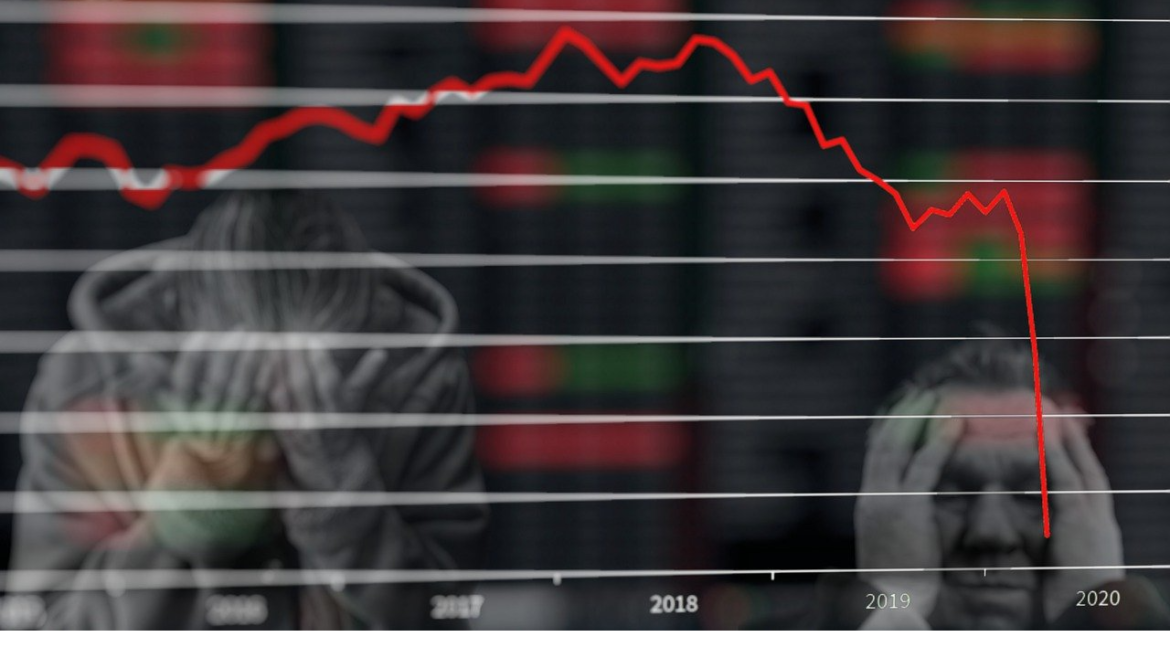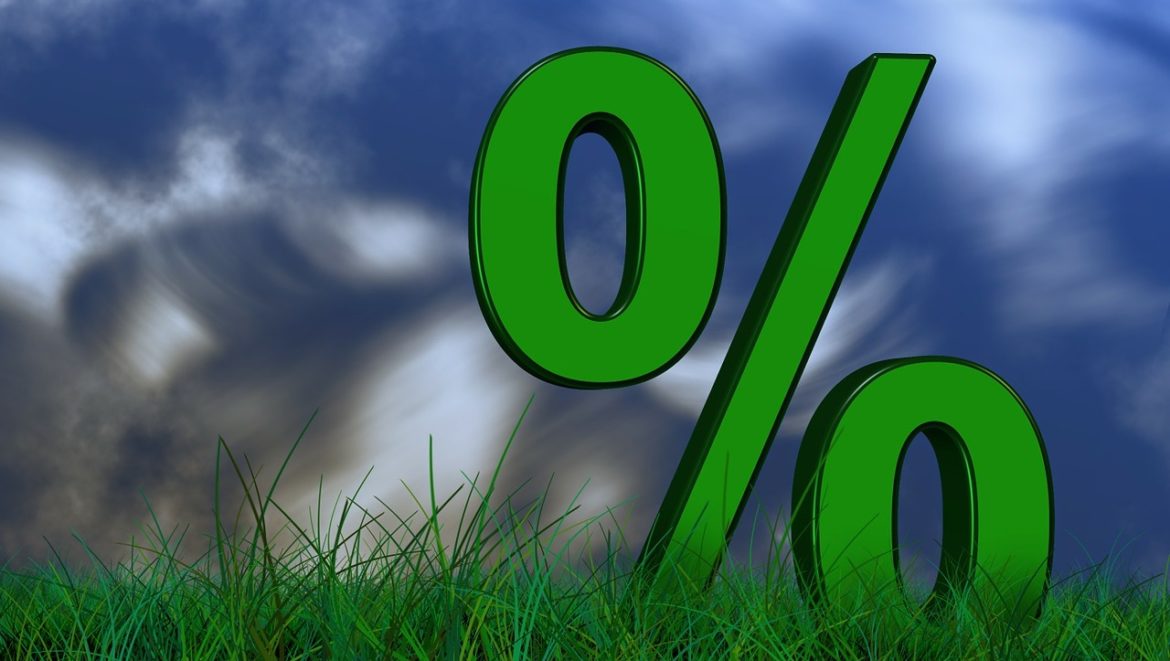Gold has all the potential to go unprecedentedly high. But silver will be gold on
Site:
Precious metals news
Goldman Sachs warns of a detrimental shift as rising rates start to erode US corporate profits and potentially thwart historical financial trends. S&P 500 companies face the largest borrowing cost hike in nearly two decades, which, if sustained, could inhibit leveraging and impact long-term profitability. Amidst this, the S&P 500 has already seen a 6.5% drop since August, and despite slight hopeful projections for technology stocks, overall S&P 500 profitability continues its descent, with only modest stabilization foreseen by 2024 amid subdued economic growth.
 The Trillion-Dollar Question for Bond Investors: When Will the Fed Stop Raising Rates?
The Trillion-Dollar Question for Bond Investors: When Will the Fed Stop Raising Rates?Oct 3, 2023 - 06:05:26 PDT
High bond yields, deemed a "generational opportunity" by BlackRock, haven’t attracted anticipated investments amid ongoing market losses. Investors, wary of persistent rate hikes and the resulting market volatility, withdrew $78.6 billion from U.S. taxable bond funds through August. While yields are at a 15-year peak, investors are opting for safer, cash-like assets, presenting a conundrum for asset managers anticipating a shift towards bonds. The hesitancy remains prevalent as the market awaits clear signals of rate stabilization.
Stocks and Treasuries plummeted amidst surging borrowing costs, with the US 30-year yield escalating to a level unseen since 2007, rattling global markets and propelling the dollar index to a 10-month high. This turbulence in the market, accentuated by predictions of enduring elevated interest rates from prominent Wall Street strategists, has cast a gloom on equity prospects, signaling potential further declines. Although the U.S. narrowly avoided a government shutdown, the specter of potential Federal Reserve rate hikes and upcoming labor market data have intensified the prevailing economic apprehension.
Price inflation has been even worse than advertised.Of course, you know that because you've lived it. But it is nice when the data crunchers swerve a little closer to reality.The Bureau of Economic Analysis did just that, revising its Personal Consumption Expenditure (PCE) data higher for the entirety of this inflation cycle.
The 10-year Treasury yield has spiked to its highest since 2007 at 4.727%, stirring concerns among investors and igniting discussions among "bond vigilantes" over the potential negative impacts of the U.S.'s soaring public debt, which has now exceeded $32.3 trillion. Despite avoiding a government shutdown, uncertainties regarding Federal Reserve interest rate hikes and upcoming labor market data are fueling apprehensions about the U.S. economic outlook and fiscal stability.
We keep hearing about a "soft landing." According to government officials, central bankers, and mainstream financial media pundits, the US economy has dodged a recession.So why are recession warning signs still flashing?
Just when I thought it would be hard to shock me again, after everything I have seen, wait until you see the details behind the Financial Disaster called "CEASARS Entertainment." I decided to look into Ceasars Palace after the humor in trying to get a Free Cup of Coffee in my hotel room, LOL...
Oct 2, 2023 - 12:44:34 PDT
Gold reached a record price of $2058 oz. in 2020, marking a hundred-fold increase from its initial $20.67 oz. value. This surge reflects the decline in the U.S. dollar's purchasing power over the past century due to inflation. Essentially, a century ago, what you could buy with one dollar now costs a hundred dollars. Today's gold price acts as a barometer of the dollar's diminished value. Despite its dip to $1850 oz. post-2020, gold remains a solid defense against inflation. When adjusted for inflation, gold would need to be $2336 oz. to equal its 2020 peak, indicating it's undervalued by nearly $500. Gold's future price will mirror inflation's continued impact.
Bidenomics, the economic policies under President Biden, has come under fire for its alleged shortcomings. Critics point to rising inflation, unprecedented debt levels, and escalating mortgage rates that are pricing many out of the housing market. Additionally, many view the administration's push for price controls as a superficial attempt to address deeper economic challenges, rather than a sustainable solution. Such controls, they argue, might hinder economic growth and negatively impact everyday Americans. It's suggested that both political parties reassess and reject these measures to ensure a healthy economic future.
Oct 2, 2023 - 12:11:13 PDT
Small businesses are increasingly feeling the economic squeeze, with nearly 1,500 Subchapter V bankruptcy filings this year alone. This number is quickly approaching the total for all of 2022, as per data from the American Bankruptcy Institute. Further signs of distress include rising small-business loan delinquencies and a decline in confidence among small-business owners. Over half of the respondents in a survey by Vistage Worldwide believe we are either approaching or are already in a recession.
Investors are growing increasingly alarmed as long-term borrowing costs skyrocket at an alarming pace, unseen since 2007. JPMorgan's David Lebovitz forewarns of a looming financial crash if this surge continues. Equities appear blindly optimistic, ignoring warning signs from the bond market. Political instability brews with Republican Matt Gaetz taking on House Speaker Kevin McCarthy. The yen and euro's declining stance against the dollar further adds to the growing list of economic concerns.
 How Great Is Our Economy If the Bottom 50%'s Share of the Nation's Wealth Has Plummeted Since 2009?
How Great Is Our Economy If the Bottom 50%'s Share of the Nation's Wealth Has Plummeted Since 2009?Oct 2, 2023 - 12:02:51 PDT
The US economy has been deteriorating for years, with issues amplifying since 2009. While economist Noah Smith optimistically suggests the wealth of the working class is improving, data from the Federal Reserve's FRED database contradicts his claims. The bottom 50% of Americans have seen their share of total assets decline by 25% since 2009. In contrast, the top 1% and 0.1% have seen their wealth share grow immensely. Smith's assertions overlook the stark reality of growing wealth inequality and the struggles faced by the majority.
Oct 2, 2023 - 08:44:18 PDT
Federal spending surged 30% since January 2020, yet Republicans can't reduce it to pre-Covid levels. M2 Money skyrocketed by 36%. The US Federal debt exceeds $33 trillion with massive unfunded liabilities. Despite a rise in manufacturing data, the sector remains in contraction for months. Overall, the economic outlook appears bleak.
The world's largest hedge fund founder warns of a looming "debt crisis" caused by skyrocketing government debt and fiscal deficits. With major players withdrawing from the market, interest rates on the debt are surging. This combination mirrors the dangerous patterns seen in some emerging markets. The Fed might intervene, but this could further fuel inflation.
Bloomberg predicts a significant crash in the US office real estate market, with recovery not expected until late 2024. The looming $1.5 trillion debt crisis by 2025 is worsened by the Federal Reserve's tight monetary policies. Regional banks, which hold a chunk of the debt, are facing financial strain, and property values are dropping. A slow recovery is anticipated, with lease adjustments extending till 2027. The reluctance to return to US offices, combined with commuting challenges, exacerbates the sector's downturn.
 US Manufacturing Surveys Signal Stagflation - "Renewed Upward Pressure On Inflation"
US Manufacturing Surveys Signal Stagflation - "Renewed Upward Pressure On Inflation"Oct 2, 2023 - 08:29:00 PDT
US manufacturing data for September shows slight improvement but remains in contraction. A disparity exists between 'soft' survey data and more pessimistic 'hard' data. Both PMI and ISM indicators suggest manufacturing struggles, with rising inflation and slowing production hinting at 'Stagflation.' Concerns for policymakers, including Mr. Powell, intensify.
Mike delves into some groundbreaking research from the esteemed team at Incrementum Capital.
Economic indicators suggest the US might be headed for a downturn despite recent optimism. While the summer saw a boost in consumer confidence, looming challenges like an auto strike, the resumption of student loan payments, potential government shutdowns, and increased oil prices could severely affect GDP growth. Bloomberg Economics sees a recession as probable, with factors like dwindling pandemic savings, rising interest rates, and a tightening credit market amplifying concerns. Despite some positive signs, historical patterns and emerging economic pressures signal that complacency may be misplaced, and a downturn is closer than many anticipate.
Banks are more vulnerable to the housing market now than they were in 2007.Most people in the mainstream will scoff at that statement. They'll tell you that the situation is very different today. After all, we don't have a big problem in the subprime mortgage market. We're not seeing a big spike in defaults. That's true. The problem is different this time. And it's actually worse.
Rising gas prices and a decade-high delinquency rate on credit cards are straining US consumers. Declining consumer confidence in September poses a risk to the US economy, heavily reliant on spending. Moody's warns of worsening debt quality. Major retailers, including Target, report reduced spending. Young and low-income consumers are especially vulnerable, with subprime auto loan delinquencies reaching unprecedented levels. Citigroup anticipates a sharp increase in default rates by next year.










